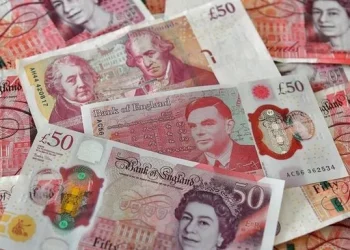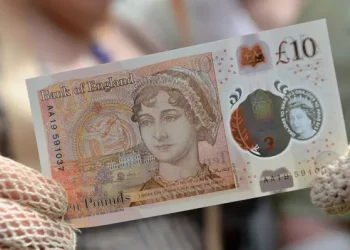Foreign exchange trading, or forex trading, is a global market where currencies are bought and sold. Understanding the exchange rates between currencies is crucial for traders and investors. One common question in this realm is how much a certain amount in one currency is worth in another. In this article, we will explore how much 2,000 British pounds (GBP) is worth in Australian dollars (AUD), the factors influencing this conversion, and various trading strategies that can be used in the foreign exchange market.
Understanding Currency Conversion
Currency conversion is the process of exchanging one currency for another. The value of one currency in relation to another is determined by the exchange rate. The exchange rate tells us how much of one currency is needed to purchase another currency. For example, if the exchange rate between GBP and AUD is 1.80, this means that 1 British pound can be exchanged for 1.80 Australian dollars.
To convert 2,000 GBP to AUD, you simply multiply the amount in GBP by the exchange rate. Therefore, if the exchange rate is 1.80, the conversion would be:
2,000 GBP×1.80=3,600 AUD
This calculation indicates that 2,000 British pounds can be exchanged for 3,600 Australian dollars at that specific exchange rate. However, exchange rates are not static; they fluctuate based on various economic and political factors.
Factors Influencing Exchange Rates
Economic Indicators
Economic indicators play a significant role in determining exchange rates. Key indicators include:
Gross Domestic Product (GDP): A rising GDP often indicates a strong economy, which can strengthen a currency.
Inflation Rates: Lower inflation rates typically strengthen a currency as purchasing power increases relative to other currencies.
Employment Figures: High employment levels can indicate a healthy economy, potentially leading to a stronger currency.
Interest Rates
Interest rates set by central banks also significantly influence exchange rates. Higher interest rates offer lenders in an economy a higher return relative to other countries. As a result, higher interest rates attract foreign capital and cause the exchange rate to rise. Conversely, lower interest rates can lead to depreciation of a currency.
Political Stability
Political stability and economic performance are interconnected. Countries that are politically stable tend to have stronger currencies. Political turmoil or uncertainty can lead to a lack of confidence in a currency, causing it to weaken.
Speculation
Traders and investors often speculate on future movements in exchange rates. If traders believe that a currency will strengthen, they will buy that currency, which can drive up its value. Conversely, if they believe it will weaken, they may sell it, leading to depreciation.
Supply and Demand
Like any other market, the forex market is driven by supply and demand. If demand for a currency exceeds its supply, the value of the currency will increase. If supply exceeds demand, the value will decrease.
Current Exchange Rate for GBP to AUD
To accurately convert 2,000 GBP to AUD, we need to look at the current exchange rate. Exchange rates fluctuate constantly due to the factors mentioned above.
As of the latest available data, let’s assume the current exchange rate is approximately 1.94 AUD for 1 GBP.
Using this exchange rate, we calculate the value of 2,000 GBP in AUD:
2,000 GBP×1.80=3,880 AUD
However, this exchange rate can change, and it is important for traders to check real-time rates before making any conversions.
Conversion Fees and Considerations
When converting currencies, it is essential to consider conversion fees. Banks and forex brokers often charge fees or offer slightly less favorable rates than the market rate. This means that the amount received in AUD may be less than the calculated amount based on the market rate.
Types of Fees
Transaction Fees: These are flat fees charged by banks or brokers for currency exchange.
Markup on Exchange Rates: Some institutions may offer a lower exchange rate than the market rate, effectively charging a markup.
It is wise to compare rates from different banks and forex brokers to ensure you receive the best possible rate for your currency exchange.
Strategies for Forex Trading
Forex trading can be approached with various strategies. Understanding these strategies can help traders make informed decisions when converting currencies.
Day Trading
Day trading involves buying and selling currencies within a single trading day. Traders capitalize on small price movements. This strategy requires a solid understanding of market trends and quick decision-making skills.
Swing Trading
Swing trading is a medium-term strategy where traders hold positions for several days or weeks. This approach aims to profit from expected price swings. Traders use technical analysis to identify entry and exit points.
Scalping
Scalping is a short-term trading strategy that involves making numerous trades throughout the day to profit from small price changes. Scalpers aim to make a large number of trades with minimal profit per trade. This strategy requires a significant amount of time and quick execution.
Position Trading
Position trading is a long-term strategy where traders hold positions for weeks, months, or even years. This approach relies on fundamental analysis and macroeconomic factors to make informed decisions.
Automated Trading
Automated trading uses algorithms to execute trades based on predefined criteria. Traders can program their systems to buy or sell currencies when certain conditions are met, eliminating emotional decision-making.
Risk Management in Forex Trading
Risk management is crucial for successful forex trading. Traders must be aware of the risks involved in the market and develop strategies to mitigate those risks.
See Also: Current GBP Exchange Rate: What is 16 Pounds in Euros?
Set Stop-Loss Orders
Stop-loss orders automatically close a position at a predetermined price to limit potential losses. This tool helps traders manage risk by preventing excessive losses.
Use Proper Position Sizing
Position sizing refers to determining how much capital to risk on each trade. Traders should only risk a small percentage of their trading capital on a single trade. This approach protects against significant losses and allows for long-term trading success.
Diversify
Diversification involves spreading investments across different currencies to reduce risk. By not putting all capital into one currency, traders can mitigate potential losses.
Stay Informed
Staying informed about economic news, geopolitical events, and market trends can help traders make informed decisions. Economic calendars provide insights into upcoming events that may impact currency values.
Tools for Currency Conversion
There are several tools and resources available for currency conversion and forex trading. Here are some useful tools:
Currency Converter Apps
Various apps allow users to quickly convert currencies using real-time exchange rates. These apps are convenient for travelers and traders alike.
Forex Trading Platforms
Trading platforms such as MetaTrader and TradingView provide real-time data, charting tools, and analysis features for traders. These platforms enable users to execute trades and monitor market movements.
Economic Calendars
Economic calendars outline important economic events and indicators. Traders can use this information to anticipate potential market movements and adjust their strategies accordingly.
Forex News Websites
Websites dedicated to forex news provide updates on economic indicators, political events, and market trends. Staying informed through these sources can enhance traders’ decision-making processes.
Conclusion
In conclusion, the conversion of 2,000 British pounds to Australian dollars is a straightforward process, but it requires an understanding of various factors influencing exchange rates. Economic indicators, interest rates, political stability, speculation, and supply and demand all play significant roles in determining currency values.
As we have discussed, the current exchange rate can fluctuate, and traders should be aware of conversion fees that may affect the final amount received in AUD. Additionally, employing effective trading strategies and risk management techniques is essential for success in the forex market.
Understanding how to navigate currency conversion and the broader forex market is crucial for anyone involved in international trade or investment. By staying informed and utilizing the right tools, traders can make educated decisions when converting currencies and executing trades.
Related Topics:

























